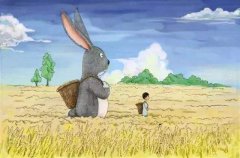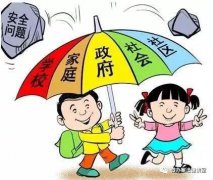Chapter Seven Language, Culture, and SocietyPresented by Quan Lihong
1. Language, Culture and thought
1.1 What is culture?
Broadly speaking, it means the total way of life of a people, including the patterns of belief, customs, objects, institutions, techniques, and language. In a narrow sense, it refers to local or specific practice, beliefs or customs.
1.1 The relationship between L & C
Generally, the relation of language to culture is that of part to whole, for language is part of culture. The knowledge and beliefs that constitute a people’s culture are habitually encoded and transmitted in language.
England school: Anthropological study of linguistics: study of language in a socio-cultural context. 1. Bronislaw Malinowski (1884-1942) (p.147):
1) The meaning of a word greatly depends upon its occurrence in a given context, or rather, upon a real language situation in life. 2) Language functions as a link in human activity, a mode of action.5
2. J. R. Firth (1890-1960): theory of the Context of Situation语境学说 Firth: a leading figure in a linguistic tradition known as the London School1.
2. 3.
The relevant features of the participants, persons, personalities. The relevant objects. The effects of the verbal action.
What Firth emphasized in this theory is quite similar to a more updating sociological axiom in language use, namely ―who speaks what to whom and when and to what end‖.6
3. The funder of systemic-functional grammar: M.A.K. Halliday The metafunctions of language
North American school: 3. Dell Hymes (1927- ): Ethnography of communication 交际民族学模式 Framework: 1.
2.
3.
Speech community: a group of people who share not only the same rules of speaking, but at least one linguistic variety as well. Situation, event, and act: speech acts are part of speech events which are, in turn, part of speech situations. SPEAKING
S --- setting and scene P --- participants E --- ends: expected outcomes; participants’ personal goals A --- act sequence: actual form and content of what is said K --- key: tone, manner, spirit (serious, light-hearted, joke) I --- instrumentalities: choice of channel (written-spoken; English-Chinese) N --- norms of interaction and interpretation (in church service) G --- genre (lectures, poems) (Setting, Topic and Participant are three main factors in communication.)9
1.2 language and thought
To what extent, and in what ways does language determine thought?
Sapir-Whorf Hypothesis
Edward Sapir (1884 - 1939) and Benjamin Lee Whorf (1897-1941)
Our language helps mould our way of thinking and, consequently, different languages may probably express speakers’ unique ways of understanding the world.Linguistic determinism: Language may determine our thinking patterns. Linguistic relativity: Different languages offer people differe
nt ways of expressing the world around. 11
EvidenceE.g. One of the features that separates Hopi language from other languages is that it does not use the same means to express time, hence it is metaphorically dubbed a “timeless language”. English: He runs fast. Hopi: similar to: He very runs. This is a supporting evidence to Linguistic relativity. 12
More evidence?
In some languages, there may be only a single word for a certain object, creature or concept, whereas, in another language, there may be several words. In Chinese, 骆驼 In English, one-humped camel: camel or dromedary; two-humped: Bactrian In Arabic: over 400 words for this animal13
Linguistic evidence of cultural differences
Terms of address
GreetingsThanks and compliments Privacy and taboos Color words
Culture-loaded expressions
kill the goose that lays the golden eggs‖ vs.―杀鸡取卵” Cold words vs. 冷言冷语 Constant dropping wears the stone. 滴水穿 石 Diamond cut diamond. 棋逢对手 Kill a man when he is down. 落井下石
Cultural overlap and diffusion
Through communication, some elements of culture A enter culture B and becomes part of culture B. Loan words in Chinese and English.肥皂剧、卡通、布丁、苹果派、雀巢、巴士、 耐克、因特网、KTV、EMAIL Typhoon, Kongfu, etc.
…… 此处隐藏:1980字,全部文档内容请下载后查看。喜欢就下载吧 ……- 2020房地产销售主管年终工作总结 2020-08-29
- 虚拟多台位互感器检定装置投资项目可行性分析 2020-08-29
- 大学助学金申请书范文1700字 2020-08-29
- 教师的工作计划 2020-08-29
- 苏教版七年级生物上册5.3植物生长需要水和无机盐教 2025-04-08
- 中央银行资产业务 2024-08-25
- 基于提升核心竞争力的企业设备采购管理创新 2024-08-25
- 高中语文人教版必修2第一单元《3囚绿记》优质课公开 2024-09-02
推荐阅读
《铁路建设项目工程质量管理办法》铁总建设[2014]292号
Unit 1 Section A 时间观念强的美国人
【XRCG学院】宿舍租赁合同(2013第一版)
今日头条

每日精选
-
 2020教师资格幼儿保教知识与能力考前冲刺题及答2020-09-15
2020教师资格幼儿保教知识与能力考前冲刺题及答2020-09-15 -
 未成年工不得从事哪些劳动2020-09-15
未成年工不得从事哪些劳动2020-09-15 -
 最真诚的周末祝福短信参考2020-09-15
最真诚的周末祝福短信参考2020-09-15
- 1、支付成功后,为何无法下载内容?付费后下载不了,请核对下微信账单信息,确保付费成功;已付费成功了还是下载不了,有可能是电脑的浏览器兼容性问题或者手机机型不支持的问题。
- 2、付费后能否更换浏览器或者清理浏览器缓存后进行下载操作?更换浏览器或者清理浏览器缓存会导致下载不成功,请不要更换浏览器和清理浏览器缓存。
- 3、如何联系客服?






